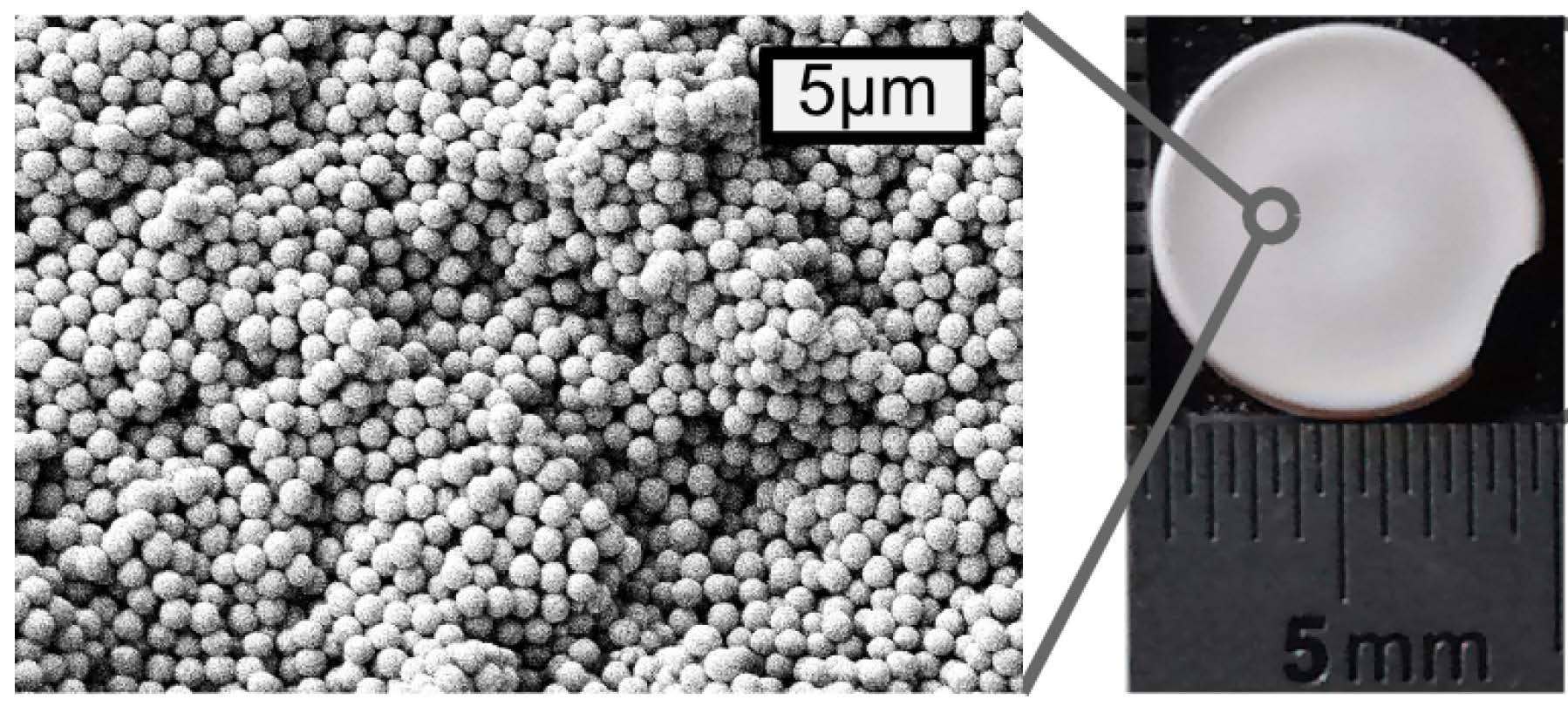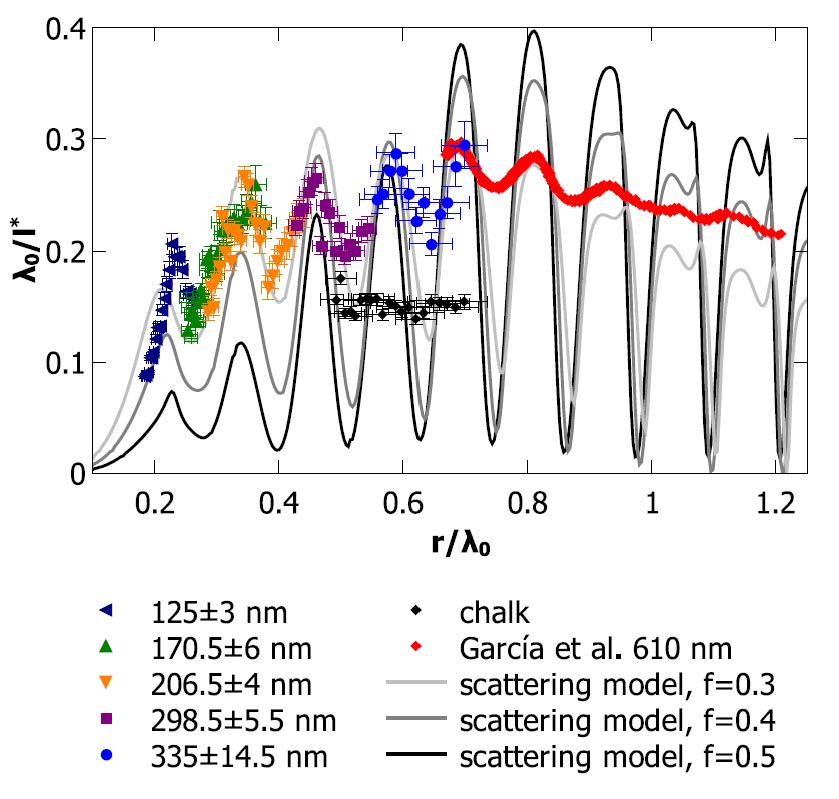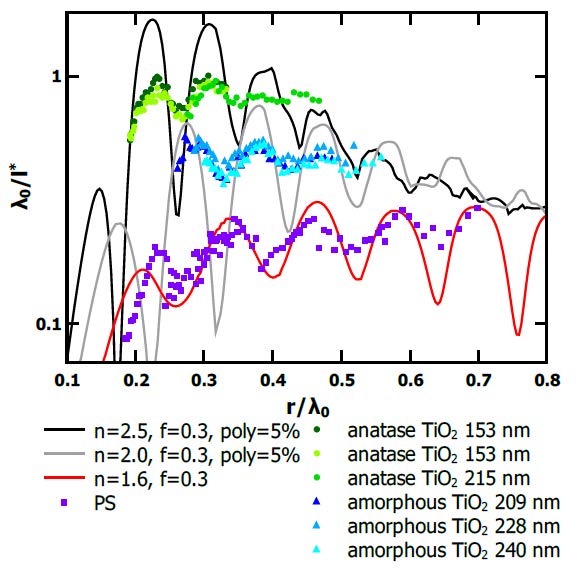Photonic glasses
Light transport in disordered media need to take into account not only the spatial arrangement of the scatterers and their individual scattering properties, but also near field effects of the scattered light waves between different, closely spaced scattering events.
In order to study these effects, we produce photonic glasses of nearly mono-disperse particles of a size comparable to the wave-length of light made different materials of different scattering strength. As shown below for polystyrene particles, this leads to resonances in the scattering strength, which can be well described with an effective refractive index model.
Using these resonances for strongly scattering materials allows one to tailor the mean free path for a maximisation of scattering in the approach to Anderson localization. Corresponding results for TiO2 nanoparticles and the possible shortest mean free path are shown in the figure below.


